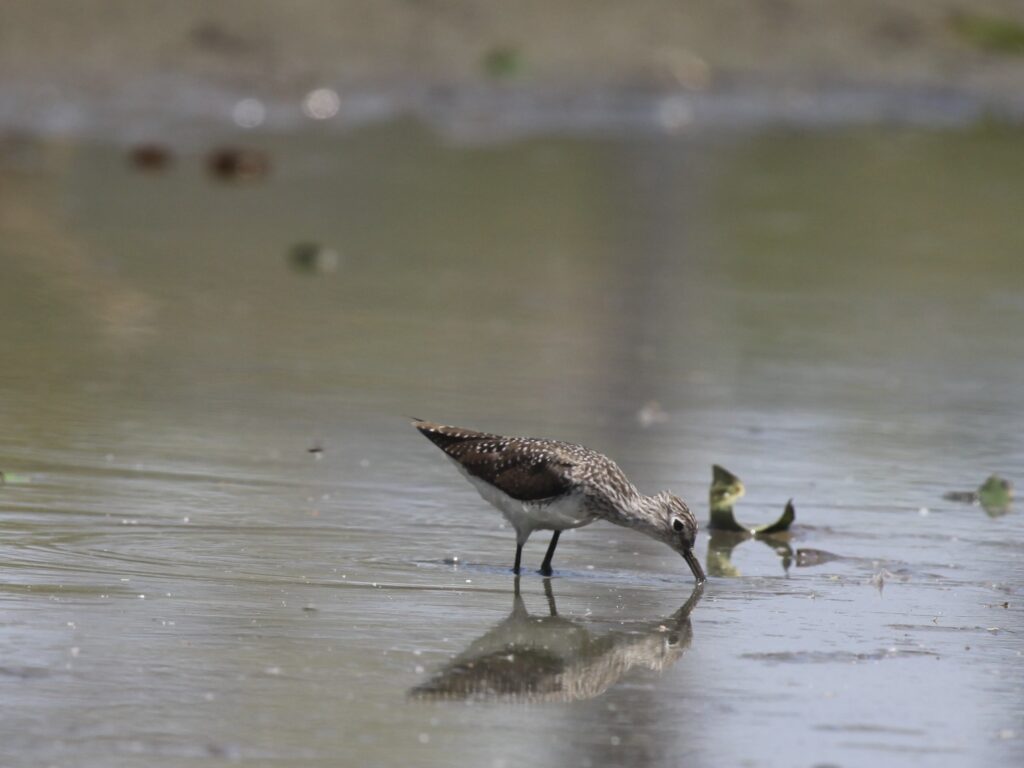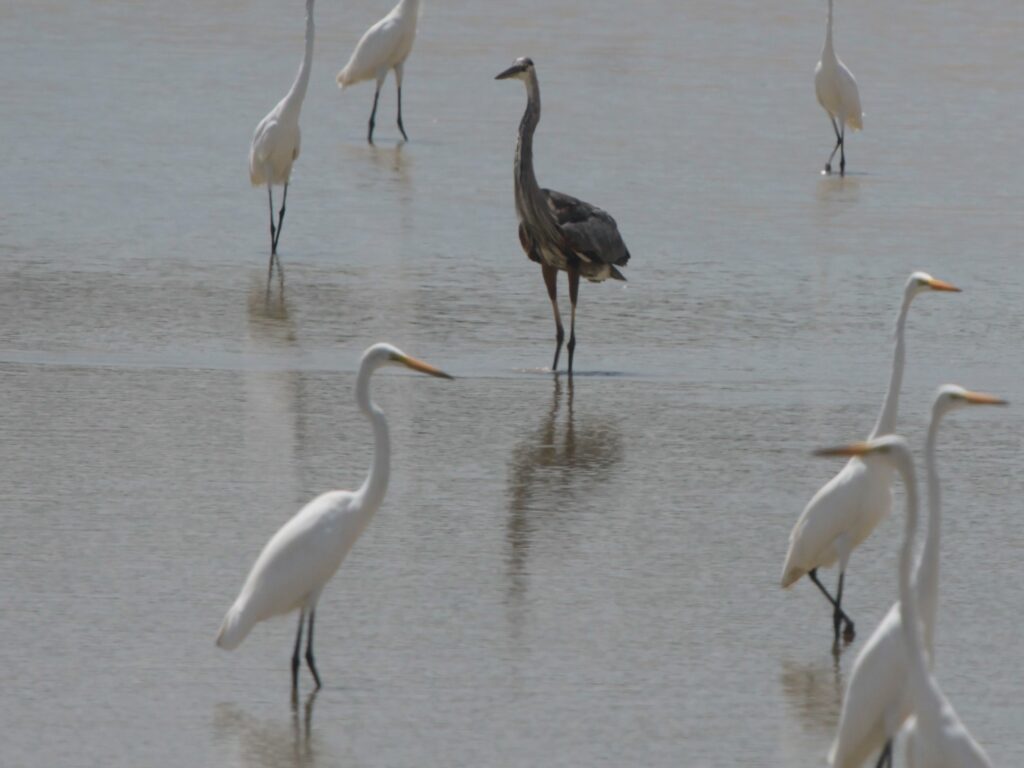Month's Subject: Mud flats and murky waters
How to hunt in mud and muddy waters
Wading and probing
Mud flats offer a bountiful source of food. If only you can get at it. Worms, shellfish, prawns, snails and bivalves all hide in the mud, some just below the surface, others quite deep. Birds have developed two major adaptations to forage on mud flats. First, they have grown longer legs and long toes, so they can walk in shallow water and on soft mud without sinking away. Second, they have developed longer bills, and an acute sense of taste and touch at the tip of their bills. Some birds such as the godwit, rely entirely on touch, probing the mud until they encounter prey. Others, like the whimbrel, use their eyes to spot burrows and then insert their bills and probe for its owner. Some birds, like the stilt, will switch between hunting by eye and picking up prey and sieving the water.
Oyster catchers feed mostly on bivalves. They slowly walk the shoreline until they see a slightly openend oyster. They quickly insert their bill into the shell and cut the muscle that closes the shell. Then they eat the oyster. With bivalves with thinner shells, the oyster catcher uses its strong bill to smash the shell and then cut the muscle
The small sandpipers feed on tiny invertebrates in shallow water, but also on the microbial mats that grow on the surface of the mudflats. To do this, small sandpipers have long fine bristles on their tongue, almost like a tooth brush. With these bristles they can ´comb´ the microbes from the surface. This part of the diet is especially important during migration because it contains high levels of unsaturated fatty acids, which are important for long distance flight.
You can see the various types foraging strategies in the following link: https://academy.allaboutbirds.org/shorebird-foraging-strategies/

Hunting for fish
Herons hunt for fish and large invertebrates by sight. They stalk their prey, mostly walking slowly along or in the water or standing still until a fish or crab is within reach. Due to a specially constructed neck, showing as a characteristic kink, herons can strike very fast to catch their prey.
When the tide rises, it is the turn of the fish to forage on the mud flats. One of the top predators in shallow murky waters is the bonnet head hammerhead shark. Hammerheads hunt for rays and other fish. In murky waters and with prey hiding in the sand, eyes are of limited use. Hammerheads use a special sense, the ampullae of lorenzini, to detect the extremely weak electric currents that produced by contracting muscles.

Prompt List
To be completed…






